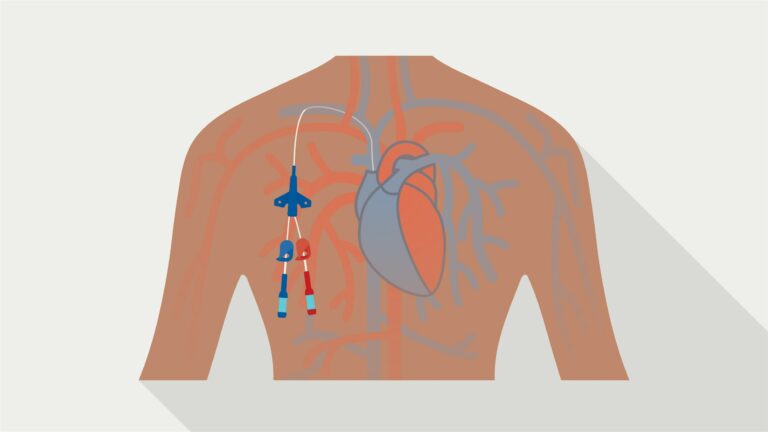
Hamilton Health Sciences is in search of a locking solution for CVADs that decreases incidence of Central Line Associated Bloodstream Infections (CLABSI) for adult and paediatric oncology, surgical and critical care patients. Compared to the standard locking solutions (citrate, heparin and saline), this alternative should decrease the costly use of Alteplase for thrombotic occlusions.
Hamilton Health Sciences is posting this Call to Innovation to seek out qualified Ontario* companies who can meet the desired outcomes. Hamilton Health Sciences and CAN Health reserves the right to not move forward with this project at its full discretion and in particular if there are no qualified Ontario companies that can reasonably meet the desired outcomes.
*Business must be registered in Ontario in order to qualify for this project.
Central vascular access devices (CVADS) are invaluable in the treatment and supportive care for adult and pediatric oncology, surgical and critical care patients. However, patients with CVADs are at high risk for developing severe central line associated blood stream infections requiring prolonged acute care and critical care admissions and resulting in adverse outcomes, increased length of stay, and even death. Microorganisms may increase as a result of biofilm development on the inside of the CVAD and the presence of thrombotic occlusions may also increase infective risk. Since fibrin and biofilm line the inside of a CVAD catheter lumen, bacteria may inadvertently enters the bloodstream each time the catheter is accessed.
Hamilton Health Sciences is in search of a locking solution for CVADs that decreases patient mortality and morbidity from Central Line Associated Bloodstream Infections (CLABSI) for adult and pediatric oncology, surgical and critical care patients compared to the standard locking solutions (citrate, heparin and saline).
Objectives:
- Financial savings by reducing the use of alteplase for thrombotic occlusions;
- Decrease patient incidence of Central Line Associated Bloodstream Infections (CLABSI);
- Decrease hospital length of stays and reduce the need for catheter replacements.
Essential (mandatory) outcomes
The proposed solution must:
- Reduce the number of occlusion in the above patient population and across continuum of care.
- Decrease in alteplase utilization and potentially reduce line replacements.
- Increase staff satisfaction as demonstrated through:
- a reduction in numbers of calls to the IV team concerning occlusions;
- a reduction in numbers of interruptions to IV therapy; and
- Maintaining current workload without imposing additional work.
- Catheter locking solution must be:
- Approved for use in the adult and pediatric population;
- Antibiotic free;
- Non-saline.
- Cost savings based on any of the following listed parameters:
- Cost Associated with alteplase utilization/dose;
- Alteplase use by clinical units / patient population;
- Central line infections – Only confirmed infections;
- Decrease in hospital length of stays;
- Decrease in number of catheter replacements.
Additional outcomes
Decrease incidence of CLABSI, which will be measured by reduction in infection and occlusion with a high degree of evidence (systematic review and clinical guidelines preferred). The infection rate for adult population in critical care over the last quarter is 0%, in adult hematology the infection rate is 2.38% and the incidence of infection is 8.
The product needs to be approved for use in pediatric population.
The maximum duration for a project resulting from this Challenge is: 6 months
CVADs are used in a variety of patient populations, particularly in oncology, nephrology, and ICU. CVADS are an important aspect of care as they provide access for frequent bloodwork, allow for vein preservation, provide safe administration of highly irritant or vesicant chemotherapy, and are essential to those needing parenteral nutrition and IV antibiotics as a part of their supportive care; however at least 70% of all nosocomial bloodstream infections occur in patients with CVADs in situ. The use of an alternative locking solution in CVADs may decrease patient mortality and morbidity from Central Line Associated Bloodstream Infections (CLABSI), which would in turn decrease hospital length of stays and positively impact the need for catheter replacements and decrease the costly use of Alteplase for thrombotic occlusions.

